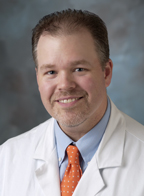Effect of lumbar drain placement on recurrence of cerebrospinal rhinorrhea after endoscopic repair. Journal Article
Local Library Link: Find It @ Loyola
| Authors: | Caballero, N.; Bhalla, V.; Stankiewicz, J. A.; Welch, K. C. |
| Article Title: | Effect of lumbar drain placement on recurrence of cerebrospinal rhinorrhea after endoscopic repair. |
| Abstract: | BACKGROUND: Lumbar drain (LD) use in the management of cerebrospinal fluid (CSF) rhinorrhea remains controversial. We analyzed the relationship between LD placement and CSF leak recurrence after endoscopic repair. METHODS: A retrospective case series was conducted. Patients who underwent CSF leak repair from 1999 to 2010 were identified. Data collected included demographics, body mass index (BMI), history of obstructive sleep apnea (OSA) or idiopathic intracranial hypertension (IIH), associated meningoencephalocele, etiology and site of leak, LD placement, fluorescein and antibiotic use, recurrence, and site of recurrence. Correlation between LD placement and leak recurrence was analyzed. RESULTS: A total of 105 patients underwent CSF leak repair. A total of 68 patients had an LD. Of these 68 patients, 15 (22%) had a recurrent leak. Of the 105 patients, 37 did not have an LD, and 5 of the 37 (14%) recurred. Recurrence rates with and without LD were not significantly different (p = 0.15). Of the 105 patients, 40 (38%) had a spontaneous leak, 15 (14%) had a traumatic leak, and 50 (48%) had an iatrogenic leak. In the spontaneous group, 30 of 40 patients had an LD and 10 of 40 did not. Recurrence was not significant between these subgroups (p = 1.0). LD was used in 11 of 15 patients with traumatic leaks. Of these 15 patients, 4 did not have a drain. Recurrence was not significant between these subgroups (p = 1.0). In 27 of 50 patients with an iatrogenic leak, an LD was placed. Of 50 patients, 23 did not have an LD. There was no statistical significance when the recurrence rates for these subgroups were compared (p = 0.26). CONCLUSION: In our study, there was no association identified between LD placement and recurrence rates after endoscopic repair of CSF rhinorrhea. Copyright Copyright 2012 American Rhinologic Society-American Academy of Otolaryngic Allergy, LLC. |
| Journal Title: | International forum of allergy rhinology |
| Volume: | 2 |
| Issue: | 3 |
| ISSN: | 2042-6984 |
| Publisher: | Unknown |
| Journal Place: | United States |
| Date Published: | 2012 |
| Start Page: | 222 |
| End Page: | 226 |
| Language: | English |
| DOI/URL: | |
| Notes: | ID: 12460; Record Owner: From MEDLINE, a database of the U.S. National Library of Medicine.; Status: MEDLINE; Publishing Model: Journal available in: Print-Electronic Citation processed from: Internet; NLM Journal Code: 101550261; CAS Registry/EC Number/Name of Substance: 0 (Anti-Bacterial Agents).; Electronic Date of Publication: 20120216; Entry Date: 20120828 |
LUC Authors
-
 8
8Welch
Related LUC Article

